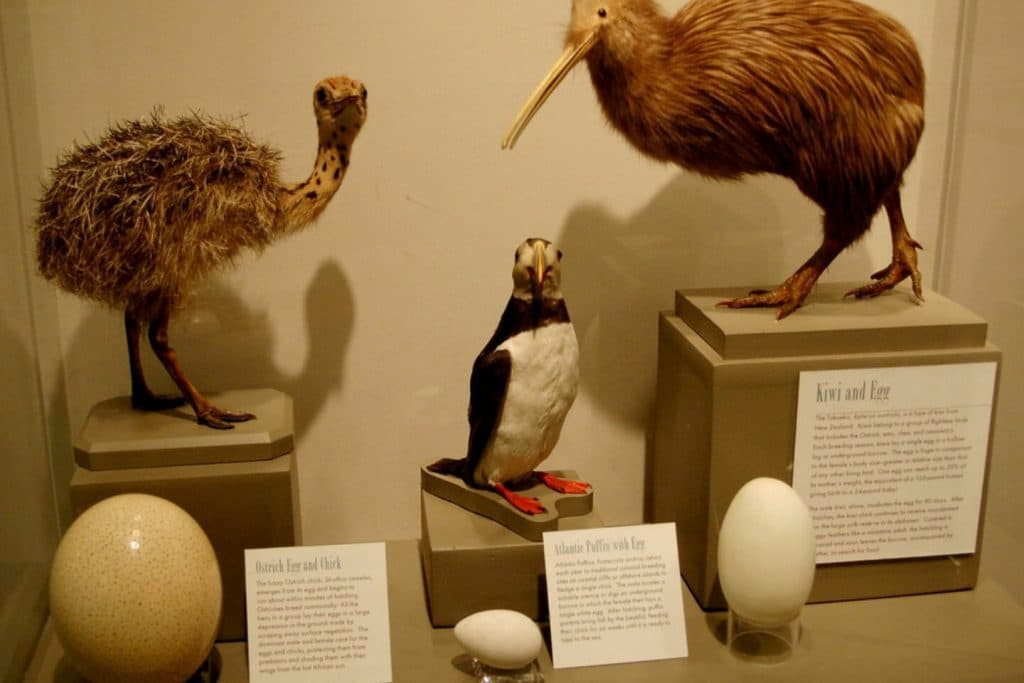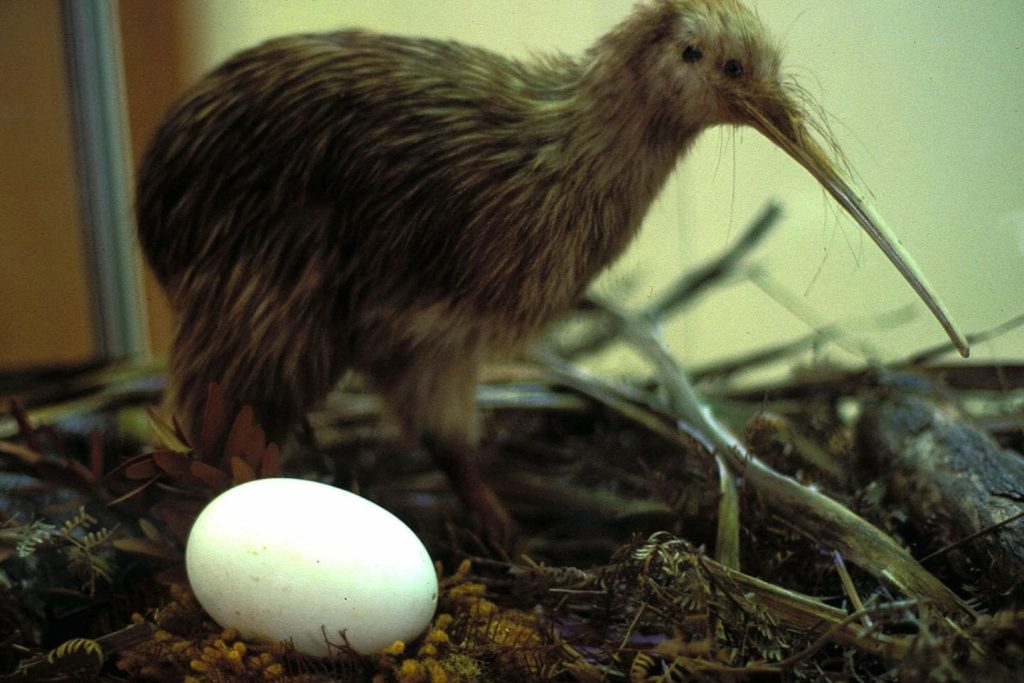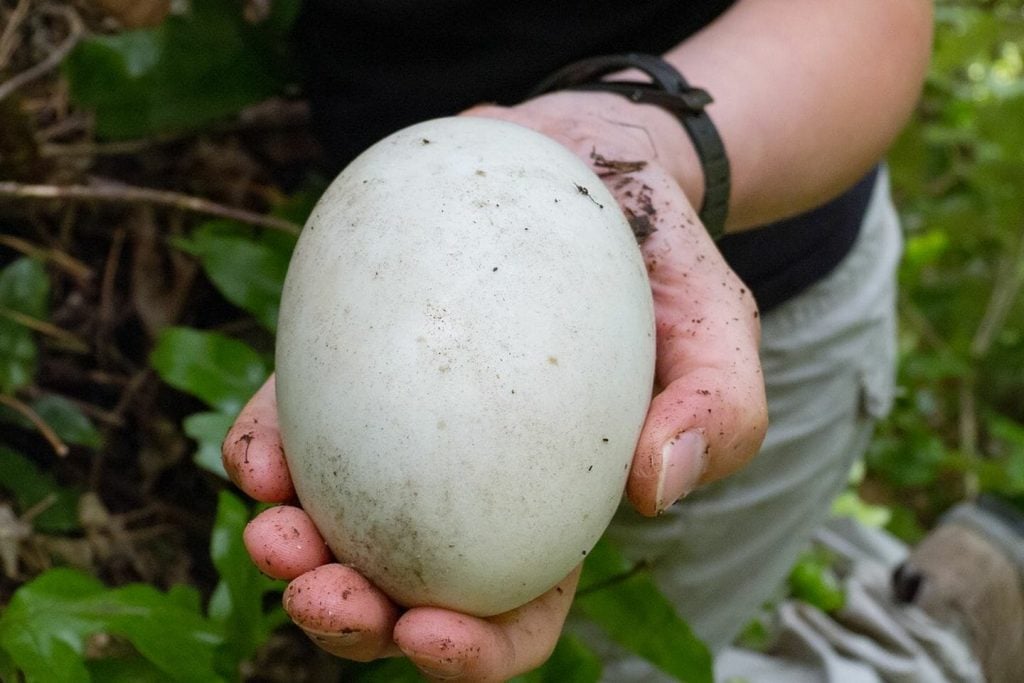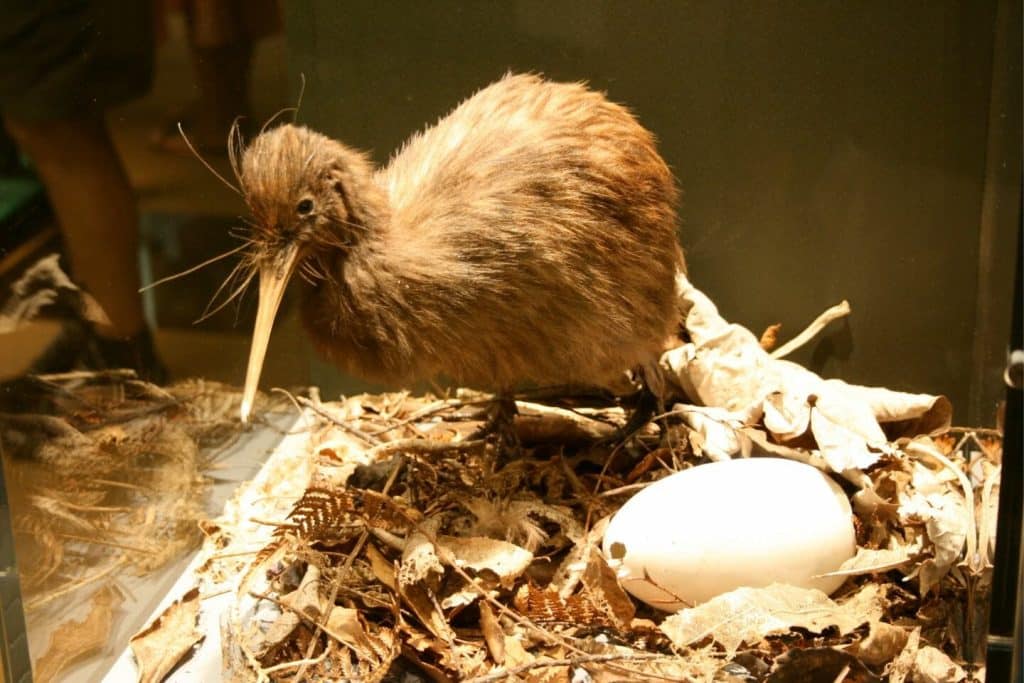Kiwi Bird Egg: Why Is it So Big? Your Questions Answered
While it is not the largest egg in the world, the Kiwi bird egg is unique because it has the highest egg-to-body ratio. But why do Kiwis lay such huge eggs? Science has provided us with some interesting answers, which we share with you below.
Have you ever wondered why kiwi bird eggs are so much bigger than those of other birds?
It’s an interesting phenomenon that has puzzled scientists for years. But now, thanks to recent research, the answers to this question are becoming clear.
Let’s explore the reasons behind the oversized kiwi egg and look at how these unique eggs have adapted over time to give us a better understanding of how evolution works.
We’ll also take a closer look at what makes these special eggs so important to their species and why they play such an essential role in helping them survive in their natural habitat.

Kiwis Have The Largest Egg-To-Body Ratio
Kiwis don’t win the award for the largest bird egg.
The Ostrich can claim that title (previously the now extinct Elephant bird), but they do hold the record for something else…
Kiwis have the largest egg-to-body size ratio. Meaning compared to their relatively small size, they lay large eggs.
These eggs can account for up to 20% of the adult kiwi’s weight. In comparison, an Ostrich egg only makes up about 2-3%.
This 20% ratio is huge. So much so that scientists compare it to a grown human woman giving birth to a three-year-old child.
Naturally, carrying and laying such a large egg is difficult for the female kiwi.
The usually water-avoidant birds have been recorded relaxing in the depths of water sources as a way to relieve the pressure of the enormous egg.
The female does a monumental job of carrying this egg to term, and once it has been laid, her mate (the male) takes up the dad’s duty of incubating the egg till it hatches.

A Protected Chick
Since carrying this big egg is such a task, there has to be some benefit, right?
The egg offers extra nourishment and protection for its chick. The thick shell provides the growing chick with a valuable insulation layer.
This is particularly useful for kiwi living at higher altitudes, where the weather can be more extreme.
The egg gives the chick an added layer of protection from cold temperatures and windy conditions
More Development Time
As well as being a form of insulation, the bigger egg also provides the developing chick with more time to grow.
Kiwi egg incubation can last for up to 80 days, much longer than other species.
This gives the growing embryo more opportunity to develop its feathers and body before hatching fully.
Unlike many other bird species that hatch altricial (not yet developed and rely on parental care), Kiwi chicks are precocial.
Meaning they are relatively well-developed and can fend for themselves at hatching.
This helps them to hit the ground running and tackle the challenges of life in the wild right away, giving them an advantage when it comes to survival.

High Yolk Content
Another reason for the big size of kiwi eggs is their high yolk content, which makes up 65% of the egg.
The yolk provides a major source of nutrition for developing embryos and freshly hatched chicks, so it stands to reason that eggs with more yolk can offer more nourishment.
After hatching, the chicks sustain themselves by absorbing the egg sac for up to two weeks before having to source food and water from their natural environment.
Fewer Eggs
While the large egg offers a range of great advantages, it also has some downsides.
Because the female kiwi has to invest so much energy into making and carrying this large egg, she can only produce one or two eggs per breeding season.
This is in stark contrast to other birds, which can lay up to 10-20 eggs over the same period.
This low reproductive rate makes the species more vulnerable to population decline and increases the need for protection and conservation.
Kiwi Egg Evolution
Kiwi eggs have been a source of fascination for scientists and bird experts for many years.
There are two main theories for the kiwis egg-to-body-ratio:
- The kiwi has always been small and has slowly evolved into larger eggs
- Kiwis were once large birds (like their extinct Moa relations) and have evolved to be smaller over time but retained a large egg
The truth is, we don’t know for sure. But, amazingly, such a small bird has been able to evolve and adapt so well to its niche.

Source: Judi Lapsley Miller, CC BY 4.0, via Wikimedia Commons
Kiwi Conservation And Operation Nest Egg
Kiwis are the iconic national bird of New Zealand, and they are a symbol of the country’s unique environment and biodiversity.
Unfortunately, predation by introduced mammals such as cats, stoats, and ferrets has devastated vulnerable kiwi populations.
Kiwis evolved to be flightless, inhabiting the dense forest floor of New Zealand native bush.
Before the arrival of humans, this forest layer was safe from predators and abundant in food.
But our coming, and subsequently bringing other mammalian predators, has changed all this.
The larger adult kiwi can defend itself with their powerful legs from smaller predators such as possums and rats, but the eggs and chicks are left defenseless.
In areas lacking conservation intervention, only 5% (1 out of 20) of kiwi chicks survive to adulthood.
This, combined with the slow reproductive rate of the species, has led to population decline without intervention.

Conservation efforts, such as Operation Nest Egg (ONE), have been implemented to rescue kiwi eggs from predator-prone areas and give the chicks a better chance of survival.
The eggs are collected by volunteers and taken to a safe place to be incubated and hatched.
The chicks are then raised in a predator-free environment until they reach a certain size and can be released back into the wild.
This conservation program has been incredibly successful and has helped to bring kiwi numbers back up from the brink of extinction.
Frequently Asked Questions
Are kiwi eggs bigger or smaller than chicken eggs?
They are about 4-6 inches long and 3 inches wide.
This compares to a standard chicken egg which is typically around 50g (1.7 oz).
The large size of the Kiwi’s egg adds extra layers of protein and nutrition to each egg.
What is the biggest bird egg in the world?
Ostrich eggs are the largest bird eggs still in existence today. They can weigh up to three pounds and are about 6 inches in length.
Unlike kiwis, ostriches lay around 30 eggs in a single clutch, but unfortunately, most of the hatchlings diet due to intense competition for food.
Why are bird eggs in different sizes?
The size is also affected by factors such as diet, available resources, and the environment.
In addition, the size of the egg often reflects its nutritional value, with larger eggs usually containing more yolk and providing more nourishment for the developing chick.
What are some facts about kiwi eggs?
They are also high in yolk content, which makes them a valuable source of nutrition for the developing chick.
Furthermore, kiwi eggs take up to 80 days to incubate – much longer than many other bird species.
Wrap Up
Kiwis have evolved to lay huge eggs, which provide extra nourishment and protection to their young, especially in the harsh climate of higher altitudes.
Moreover, unlike many other birds, Kiwi hatchlings are precocial – they are very nearly developed when they come out of the egg.
Scientists have posited two theories about the huge size of these eggs – either the birds used to be big earlier or else evolution has caused their eggs to grow bigger.
We can’t be sure which reason is true.
Unfortunately, despite its huge size and extra layers of protection, only 5% of the kiwi’s young survive in the wild.
This is largely due to predation by humans and mammals that have been introduced to their environment by us.
Conservation efforts have, in the recent past, been able to improve the numbers of these birds and are giving them a fighting chance.
Thank you for reading!



